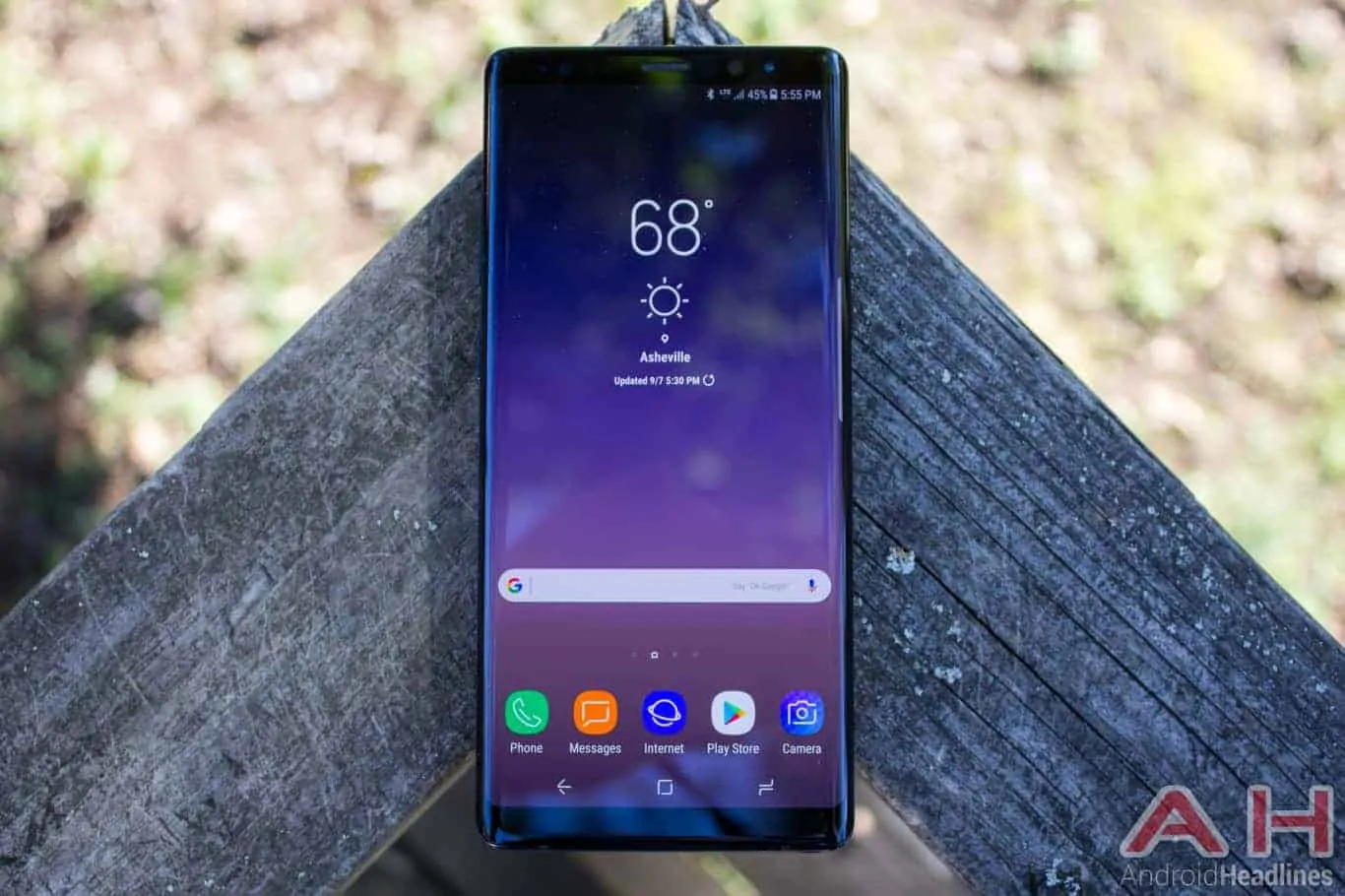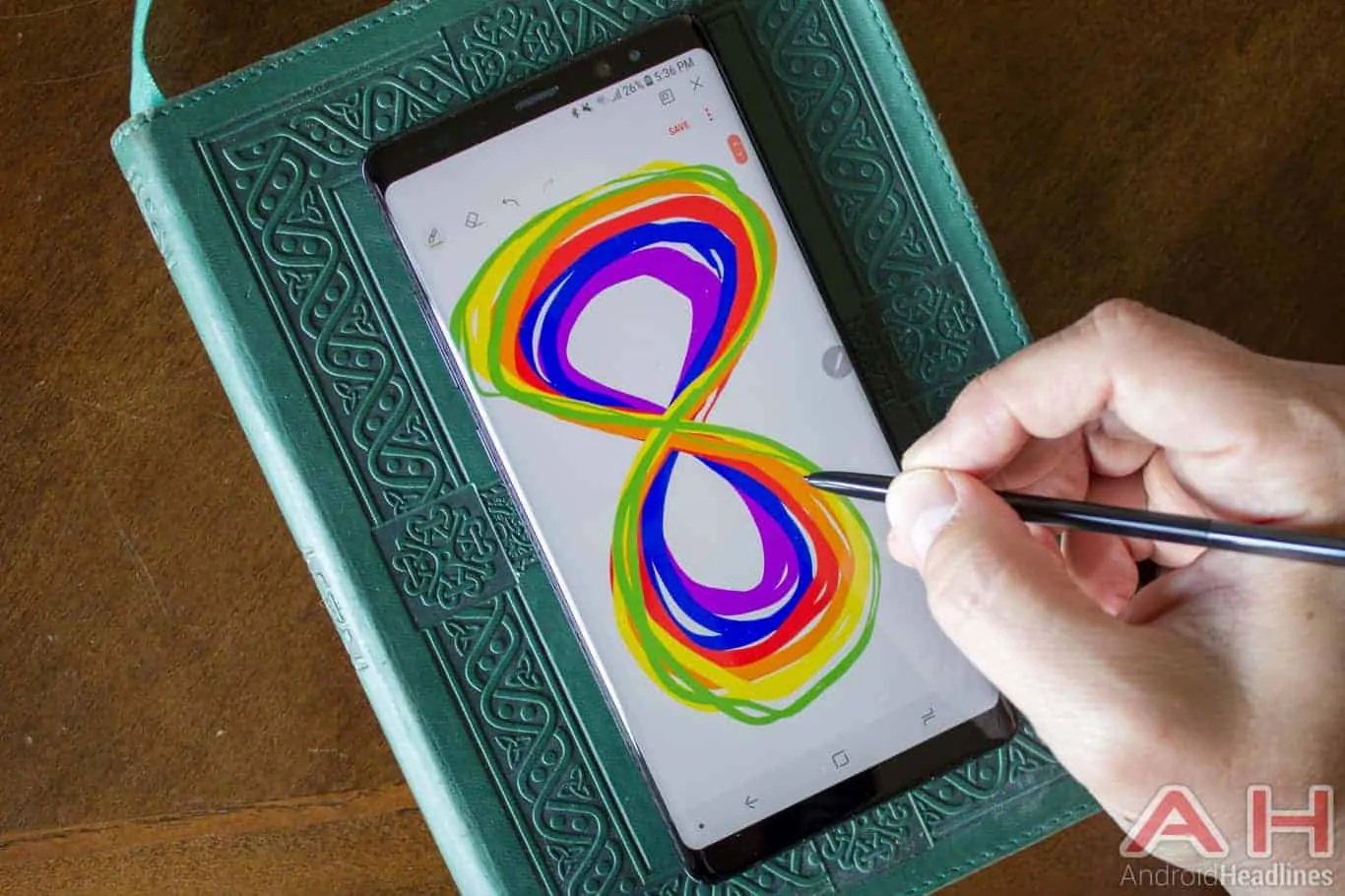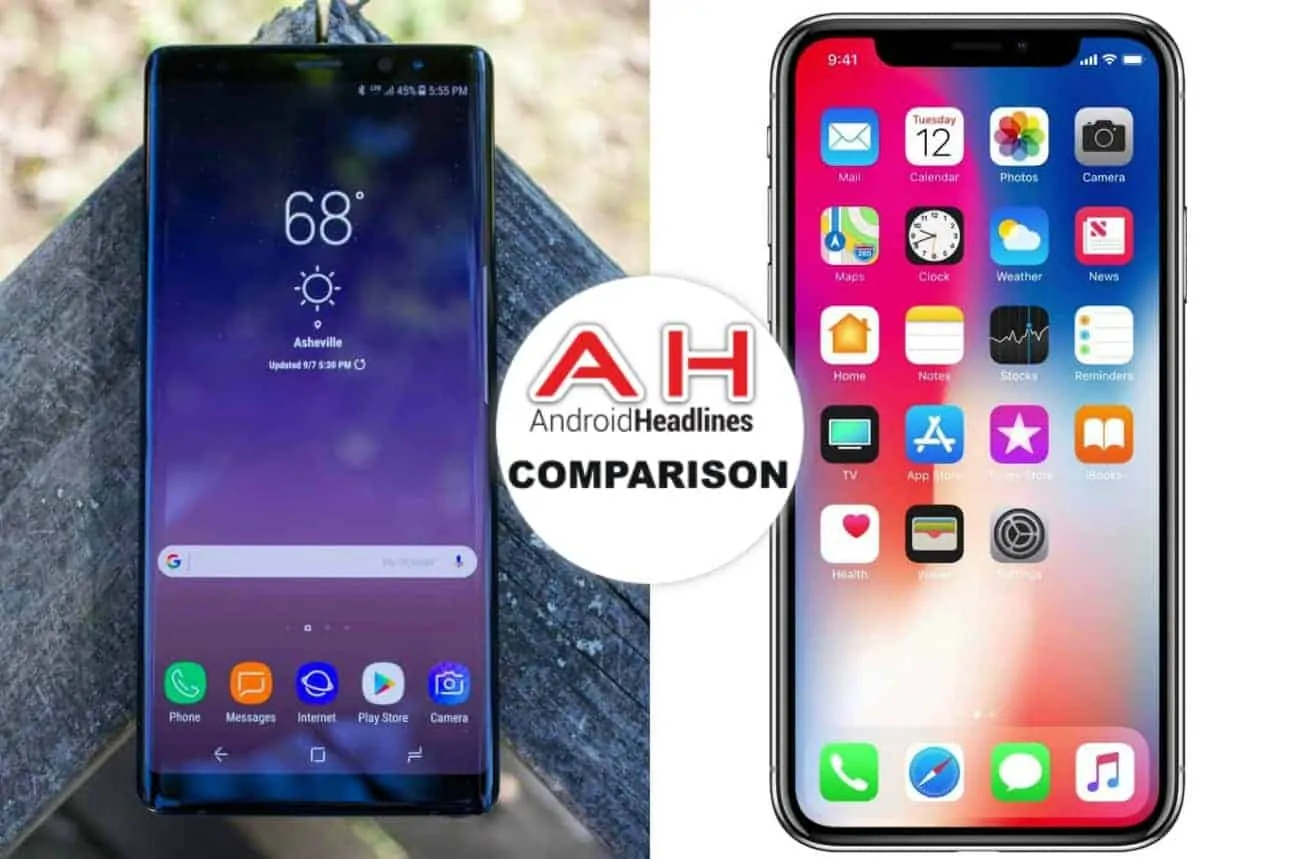Introduction
Do we have a good one for you today – the Samsung Galaxy Note 8 takes on the new Apple iPhone X in a battle of high priced smartphones and certainly the pinnacle of current technology from both companies. Many people will argue that this comparison is stupid, or unnecessary, but we must compare the top Android phones against the competition to see where we stand. The year 2017 marks the tenth year anniversary of the release of the first Apple iPhone and while for the past few years the design has remained very similar, the iPhone X is a radical change for Apple. This is their boldest and most ambitious iPhone in its history. This year we saw Samsung make an evolutionary change from the Galaxy S7 series to the Galaxy S8 series that has carried over to the Note 8. While the Galaxy S8 series will easily outsell the Galaxy Note 8, the Note 8 is Samsung’s crowning success and it is only fair that we compare it to the iPhone X. Given we are an Android website, a direct comparisons between iOS and Android handsets presents a number of difficulties, but we want to see just how far Apple has come to matching our love for the more open Android OS. Before we examine each individual device, we will first see what these two flagships have in common, if anything.
As you look down the specs for these two devices, you can see that they are very different from each other. The Galaxy Note 8 and the Apple iPhone X both use the new 18.5:9 and 19:9 ratio, respectively, a Super AMOLED display – in fact, Samsung provides them to Apple – although the Note 8’s display is larger and has a higher resolution. Both use Gorilla Glass 5 for protection on the front, a metal frame, and a glass backing – Gorilla Glass 5 on the Note 8, but the iPhone X is unknown. Both come standard with 64GB of RAM, however, the Note 8 has expandable memory while the iPhone X does not – but for an extra $150 you can purchase a 256GB version. Both devices have a dual camera setup and both use a 12-megapixel sensor for both cameras. They both have a quick charge option as well as wireless charging. The Note 8 and iPhone X will work on all major US carriers, and include BT 5.0, facial recognition, a heart rate monitor, and some form of a personal assistant.
Please take a thoughtful look at the detailed specifications comparison chart below and here you will see just how these two great devices stack up against one another. After that, we will look at each device in greater depth and point out some of its pros and cons. From all of this information, we will try to determine the winner based on specs and execution of design and functions.
Specifications

Samsung Galaxy Note 8
 Samsung introduced the Galaxy Note 8 even though there were strong rumors of the demise of the Note series after last years’ Note 7 debacle. The Galaxy Note 8 follows the Galaxy S8 series by including the new Infinity Display. Gone is Samsung’s physical home button in favor of onscreen buttons. This move allowed the Note 8 to have a very small top and bottom bezel, while the Infinity Display design literally eliminates any left or right bezels. The bottom bezel has no function whatsoever, while the top bezel handles the indicator light, speaker, front-facing camera, and iris scanner. The fingerprint sensor is now separated by the flash for the camera, which does help a little in its awkward placement. When there is light, you can quickly unlock the phone with the facial recognition or the iris scanner (if you do not wear glasses), or you can always fall back on using a pin for unlocking the Note 8. Samsung made improvements to the S Pen and software to make it more productive and easier to use. The Galaxy Note 8 is arguably the best looking and most feature-laden smartphone on the market, however, all of this technology comes at a cost of approximately $960, which is still less than the $999 Apple wants for its 64GB iPhone X.
Samsung introduced the Galaxy Note 8 even though there were strong rumors of the demise of the Note series after last years’ Note 7 debacle. The Galaxy Note 8 follows the Galaxy S8 series by including the new Infinity Display. Gone is Samsung’s physical home button in favor of onscreen buttons. This move allowed the Note 8 to have a very small top and bottom bezel, while the Infinity Display design literally eliminates any left or right bezels. The bottom bezel has no function whatsoever, while the top bezel handles the indicator light, speaker, front-facing camera, and iris scanner. The fingerprint sensor is now separated by the flash for the camera, which does help a little in its awkward placement. When there is light, you can quickly unlock the phone with the facial recognition or the iris scanner (if you do not wear glasses), or you can always fall back on using a pin for unlocking the Note 8. Samsung made improvements to the S Pen and software to make it more productive and easier to use. The Galaxy Note 8 is arguably the best looking and most feature-laden smartphone on the market, however, all of this technology comes at a cost of approximately $960, which is still less than the $999 Apple wants for its 64GB iPhone X.
The Note 8’s display size increased from 5.7-inches to 6.3-inches and uses Samsung’s Infinity Display. It carries with it an 18.5:9 aspect ratio, Super AMOLED technology, and a QHD+ display resolution of 2960 x 1440 pixels that generates 521 pixels-per-inch (PPI). The default is set at an FHD+ (2220 x 1080) resolution to save battery life, but you can easily go into the display settings to increase it to the QHD+ resolution. The Note 8 uses Samsung’s ‘always-on’ display that saves battery life while making it easier and quicker to check notifications. The Galaxy Note 8 uses the newest Qualcomm Snapdragon 835 octa-core processor for the US/China models clocked at 2.35 paired with an Adreno 540 GPU. For EMEA countries, Samsung uses its excellent Exynos 8895 octa-core clocked at 2.3 GHz and the Mali-G71 MP20 GPU for graphics with both processors using the new 10nm technology. The Galaxy Note 8 packs 6GB of DDR4 RAM that contributes to a fast and smooth operation and easy multitasking. It has 64GB of expandable memory via a microSD card.
After many rumors and much anticipation, Samsung finally included dual 12-megapixel cameras in the Note 8. The primary camera includes a large aperture of f/1.7 for low light conditions, PDAF, a dual-tone LED flash, auto HDR, OIS, and 2X Optical Zoom. You can also zoom 10X by swiping the screen, but that is a digital zoom. Samsung did not throw in secondary specs in its secondary camera – it carries all of the same attributes as the primary camera with the exception of a smaller, f/2.4 aperture. The primary camera handles the majority of photos, while the secondary camera allows the user to create photos with a bokeh effect – where you focus on one object and then blur the background. Samsung uses an 8-megapixel front-facing camera (FFC) with a large f/1.7 aperture, auto-HDR, and autofocus. The non-removable 3,300 mAh battery should easily make it through the day and when you do need to charge the Note 8, it features Adaptive Fast Charging and Quick Wireless Charging for both Qi and PMA formats.
The Note 8 features Samsung Connect that allows you to control Samsung’s appliances and other home controls such as your thermostat. The DeX Station (optional purchase) will allow you to interface the Galaxy Note 8 with a monitor, keyboard, and mouse to give you a near-desktop experience. Samsung has its own personal assistant, Bixby, to combat Apple’s Siri and it has its own button on the left of the device. The Galaxy Note 8 keeps Samsung’s popular heart rate monitor and oxygen saturation sensor. Another nice feature of owning a Samsung device is that you not only have access to Android Pay but also Samsung Pay that opens up even more possibilities to make mobile payments. The Galaxy Note 8 series is IP68 certified against dust and water. The item that sets the Note 8 apart from other smartphones is its improved S Pen and associated apps. It arrives with Android 7.1.1 (Nougat), measures 162.5 x 74.8 x 8.6 mm, and weighs in at a hefty 195 grams. It is available in Midnight Black, Orchid Grey, Maple Gold, or Deep Sea Blue depending where you are located. The Galaxy Note 8 will cost about $960 outright and is available for purchase from just about everywhere.
Apple iPhone X
 The new Apple iPhone X is certainly their boldest design effort to date, and according to Tim Cook, a glimpse into the future of iPhones, even though Apple is generally behind the times when it comes to such things. For years, Apple refused to offer a larger display, yet the larger display is outselling the smaller version. The public likes smaller bezels and finally, the iPhone X offers that solution. AMOLED displays are the future, but Apple stuck with the LCD format until now. They seem to drag their feet in following Samsung, yet they sell a boatload of iPhones. Do the iPhone X’s improvements make it a better device than the Samsung Note 8 – let’s just see in this comparison.
The new Apple iPhone X is certainly their boldest design effort to date, and according to Tim Cook, a glimpse into the future of iPhones, even though Apple is generally behind the times when it comes to such things. For years, Apple refused to offer a larger display, yet the larger display is outselling the smaller version. The public likes smaller bezels and finally, the iPhone X offers that solution. AMOLED displays are the future, but Apple stuck with the LCD format until now. They seem to drag their feet in following Samsung, yet they sell a boatload of iPhones. Do the iPhone X’s improvements make it a better device than the Samsung Note 8 – let’s just see in this comparison.
The iPhone X uses a new 5.8-inch Super AMOLED display with an odd 2436 x 1125 pixel resolution that amounts to 458 PPI. It also sports a 19:9 display ratio with Dolby Vision and HDR 10 for a better entertainment experience. The display has an awkward cut-out in the top middle of the device, which makes viewing in the horizontal mode a bit strange – many apps are not updated for the new Apple display. It retains Apple’s 3D Touch capabilities, which is a nice feature allowing the user to apply multiple pressures on the display for additional options. It uses its own Apple A11 Bionic chip and their Apple GPU for graphics but offers no speed specifications. It packs only 3GB of RAM and a base of 64GB of non-expandable memory – you must purchase the 256GB model if you want more internal storage.
While Apple once ruled the mobile camera scores, they have long been surpassed by several Android flagships – in fact, the Google Pixel 2 is the number one rated camera. The iPhone X offers dual 12-megapixel cameras mounted in a vertical position on the back left edge of the device. They have an aperture of f/1.8 and f/2.4 with OIS, PDAF, quad-LED dual-tone flash, and 2X Optical Zoom. The FCC is a 7-megapixel affair with an aperture of f/2.2 for selfies and Appletalk video chatting. Apple included a non-removable 2,716 mAh battery with a rapid charge feature and finally included wireless charging, but only for the Qi format.
The Apple iPhone X comes with stereo speakers and does offer IP67 certification for dust and water resistance. There is no fingerprint sensor on the iPhone X, so you must rely on Face ID to unlock your device or a passcode. You are limited to Apple Pay so your shopping is limited only to merchants that purchased the necessary hardware to accept Apple Pay. The iPhone X has no 3.5mm headphone jack and uses Apple’s proprietary Lightning Port with an included dongle to use wired headphones. Apple’s heralded Siri is ready, willing, and able to serve you. It arrives with iOS 11.0.2 and will be updated yearly. It measures 143.8 x 70.9 x 7.7 mm, and weighs in at 174 grams. It is available in Silver or Space Gray. The iPhone X will cost about $1,000 outright for the 64GB model and about $1,150 for the 256GB model. Dealers are taking pre-orders now with deliveries expected by the first of December.
…And The Winner Is…

The Final Word
This conclusion is inevitable – I am picking the Samsung Galaxy Note 8 over the Apple iPhone X. I will be the first to admit that we favor the openness of Google’s ecosystem over Apple’s closed ecosystem. We are free to pick any keyboard we want to use, any music player, and any weather, clock, or photo app we choose. We can customize our display and use different themes or even overlay a specialty app launcher we may prefer. It is not just about the operating system – the Note 8 is a nicer looking device, and certainly just as well built.
The Galaxy Note 8 offers a larger and sharper display, the Always-On feature for notifications, double the RAM for smoothness, quickness, and a better multitasking experience. The Note 8 has expandable memory making it easy and cheap to add additional storage. It too has the dual 12-megapixel cameras and takes excellent pictures. The FFC is slightly larger and has auto-HDR and its own autofocus. The battery is larger and offers wireless charging for both formats and you don’t need a dongle to listen over wired headphones. The Note 8 also has facial recognition to unlock the device, but also the backup of a fingerprint scanner. For added security, there is also a built-in iris scanner and the added protection of IP68, not IP67, like the iPhone X. We dare not leave out the added bonus of the S Pen and its associated software.
The Apple iPhone X is a step in the right direction – at least in its hardware. While it has a near bezel-less display, it does not have the curved edges and true bezel-less display of the Note 8. There is no doubt that the new processor and software optimization will make the iPhone X every bit as fast and smooth an operator as the Note 8, but the 6GB of RAM in the Note 8 will help it greatly when it comes to multitasking or running dual windows. It does have stereo speakers, but no 3.5mm headphone jack. Then there are the limits and proprietary hardware found on the iPhone X – things like Appletalk, iTunes, and Apple Pay. Then there is the price factor – $1,000 for a 64GB device that has no expansion. It may be an excellent smartphone, but it is certainly no Galaxy Note 8.
Buy The Samsung Galaxy Note 8

